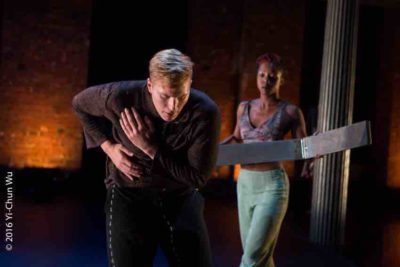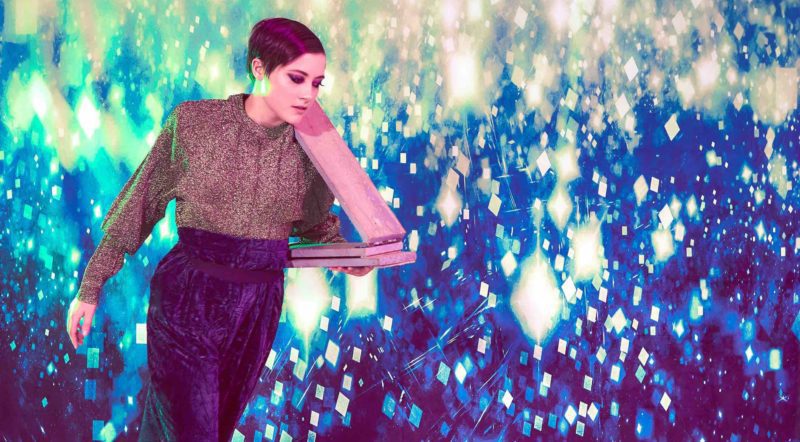INTERVIEW: BodyStories: Teresa Fellion Dance ready to ‘rose walk’
Familial bonding and identity formation are at the heart of BodyStories: Teresa Fellion Dance’s latest production, rose walk green ice, which is set to premiere Dec. 7 for a three-night run at Danspace Project on East 10th Street in New York City.
The dance project is the continuation and culmination of two previous works, HOME and Agawam. First came HOME, which elicited such a reaction from the audience that the boundary-shifting piece generated Agawam, which explores places of origin and how they shape familial bonds.
With the new piece, rose walk green ice, Fellion hopes to keep exploring these themes, improving upon the impact of certain moments in the previous works. The performers are Amanda Krische, Maria Gardner, Kimberly Murry, Jessica Stroh, Ashley Zimmerman and Elizabeth Shew.

At the performances, which run at 8 p.m., Fellion’s piece will be followed by Winifred Haun & Dancers’ Trashed, a collaboration between Haun and Australian circus artist Emma Serjeant.
Recently, Hollywood Soapbox exchanged emails with Fellion about the new piece. Questions and answers have been slightly edited for style.
What can audiences expect from rose walk green ice?
Audiences enter into rose walk green ice with its images already manifesting. The performers have been connecting through this dance before the audience arrives, and the movement does not stop until the work ends approximately 49:25 later.
This dance is energetic and human. The dancers are intuitively connected like a family, and you ride with them through identity questioning, support, movement conversation, wild bursts of energy, ecstasy and empowerment they experience. As an observer, this work takes you on a journey of self-reflection and questioning that leads to an ease of grounded, fluid presence in communication with others, and also focuses on perspective: yours of the dancers, yours of the other audience members.
There is audience inside and outside of the piece, observing each other. Both the audience and dancers are witnessing each other in this dance, all of us being guided through twists and turns in this transformative adventure.
By varying spatial orientation to the audience, utilizing various groupings, and highlighting key moments from previous pieces in the trilogy, audiences are offered multiple perspectives of each character, from a variety of angles. Through these perspectives, the audience is offered notions of familial bonding and identity formation, in the hopes that each audience member becomes more aware and appreciative of the complete self and of those around them.
Do you feel like this is the ultimate culmination of the project or only the next stage? Is it still a work in progress?
rose walk green ice is a culmination of a project that began with HOME and Agawam that explores self-awareness within communal bonds. All works are in progress in the sense that dance is a living art form, created and performed by human beings. Even when re-setting something, there are new ways into the work and changes that occur.
This piece will continue to grow in myself and the dancers; however, this is an ultimate culmination for sure. We have been investigating this movement and these themes for two years, and the experiences that the dancers are having as they go through their journeys of the self, their familial connections, and their openness, widening, and understanding of perspectives outside of their own, is palpable.
The work feels as if it has brought together and developed the movement and images from HOME and Agawam, and nurtured them into their potential and message. Each piece, HOME, Agawam and rose walk green ice is its own in the trilogy, and they stand independently. Actively committing to and investigating threads of this trilogy over a long span allows it to mature.
With HOME, we explored the rituals people undertake to discover their identity. The constant shifts in dynamics model the inconsistencies and uncertainties we go through in growth. The dancers experienced boundaries and learned how to navigate through them in their journey towards self-actualization. After premiering this piece, we were told that certain sections recreated personal memories for audience members. It was a success in that people were able to access something that reminded them of their home and their personal journey through the movement.
This investigation went even further with Agawam. We explored how places of origin shape familial bonds and identity formation. We contemplated how we may choose to accept, oppose or become indifferent to our familial bonds, ultimately hoping to find personal identity within our families, and how our families shape our personal identities.
Audience members were moved to share that through our piece they connected to their honoring and rebellion from their own heritage and women’s roles in their family history. In building rose walk green ice, I strengthen these points of access and add to the elements of both familial bonds and personal identity, with further development of material from HOME and Agawam.
With the established movement vocabulary and desired aesthetic I worked with spatial orientation, movement manipulation, various partnering and staging elements that add to and/or take away from the desired goal. rose further defines intentions and improves the impact of several moments.
I hope audience members see themselves in these characters and become more aware of how their previous experiences have shaped the way they interact with others. In realizing this, maybe they can extend more compassion to others.
How difficult is the piece from the dancers’ perspective?
This work requires a ton of stamina. The dancers are onstage for the entire dance except two moments, and the energy of the dance for the most part escalates and builds on itself. The trajectory and shape of the dance is tension and suspension with bursts of energy that give way to highlighted images and moments that lead to detailed puzzles and combustion, and then grow into sustained full group activity at a fast tempo with multi-directions.
What skills do you look for among dancers who want to join the company?
I enjoy working with dancers who are very individual, so there is not one thing I look for exactly. When we invite people into rehearsal or have auditions, we are interested in how dancers work with our company. I always use improvisation in our audition process with clear directives to get a sense of how a dancer interprets and plays within those directives, how they navigate them, and how they listen to the other people and themselves in space.
I also like to give detailed phrase work to see how dancers integrate several qualities within one movement phrase, digest intricate timing and embody the human performance of a phrase to make it their own. I introduce partnering, both learned and through a brief partnering choreography workshop, to understand how dancers collaborate with each other, what their approach is to exploring the directions, and how they connect to our company members.
In what ways would you like the audience transformed after watching the piece?
I would like the audience to feel close to the dancers and to each other in the space, like they understand something more about each other and those around them from being invested in the piece. If the dance resonates with audience in a way that makes them reflect on something in their own lives and empathize with the stories of others, then we have moved them. If audience members have an honest conversation with someone after the piece that they knew before or not, that feels like a good connection to me.
By John Soltes / Publisher / John@HollywoodSoapbox.com
BodyStories: Teresa Fellion Dance will present rose walk green ice Dec. 7-9 at Danspace Project, 131 E. 10th St. in New York City. Click here for more information and tickets.

